It is overland tour to Mt. Wudangshan in Hubei province from Xian. Hubei province is located in mid China connecting many provinces in China by convenient transportation of railway, cruise, and flights......
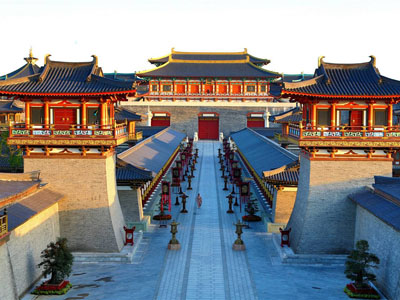
 Maduo, which means "the source of the Yellow River" in Tibetan, is the first stop into Tibet from inland China. It's located in Qinghai Province about 500 kilometers to the southwest of Xining, the provincial capital.
Maduo, which means "the source of the Yellow River" in Tibetan, is the first stop into Tibet from inland China. It's located in Qinghai Province about 500 kilometers to the southwest of Xining, the provincial capital.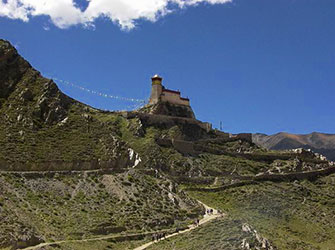 Zetang, a town about 200 km southeast of Lhasa, is the birthplace of the Tibetans. Legend says a sacred monkey married the daughter of a demon. The girl then gave birth to six monkeys whose offspring were human beings - today's Tibetans.
Zetang, a town about 200 km southeast of Lhasa, is the birthplace of the Tibetans. Legend says a sacred monkey married the daughter of a demon. The girl then gave birth to six monkeys whose offspring were human beings - today's Tibetans.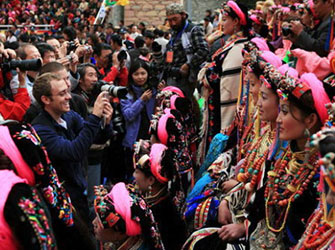 Danba, about 370 km away from Chengdu, is the cultural center of the Jiarong region. Situated in the east gate of Garze, Sichuan Province, Danba is hidden among western Sichuan's mountains and valleys. Danba's nickname, "Beauty Valley," is a tribute to the splendid landscapes and the culture. Of course, in Danba, the girls are very pretty, and every year they hold the Beauty Festival.
Danba, about 370 km away from Chengdu, is the cultural center of the Jiarong region. Situated in the east gate of Garze, Sichuan Province, Danba is hidden among western Sichuan's mountains and valleys. Danba's nickname, "Beauty Valley," is a tribute to the splendid landscapes and the culture. Of course, in Danba, the girls are very pretty, and every year they hold the Beauty Festival.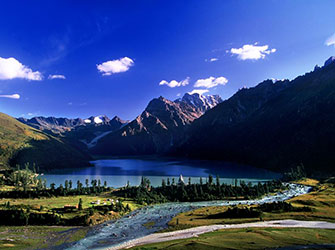 With its preserved environment, Yilhun Lhatso (Xinluhai Lake), a lake 10 km away from Ma-ni-kan-ko, is a fairyland on earth. Meadows and spruce, fir and cypress trees surround the lake. Marnyi stones engraved with Buddhist sutra can be seen everywhere from the lake's shore. Flocks of mallard fly overhead while schools of fishes swim in the lake. A snow-capped mountain standing against a blue sky and the lake sparkling in the sunlight creates an awe-inspiring landscape.
With its preserved environment, Yilhun Lhatso (Xinluhai Lake), a lake 10 km away from Ma-ni-kan-ko, is a fairyland on earth. Meadows and spruce, fir and cypress trees surround the lake. Marnyi stones engraved with Buddhist sutra can be seen everywhere from the lake's shore. Flocks of mallard fly overhead while schools of fishes swim in the lake. A snow-capped mountain standing against a blue sky and the lake sparkling in the sunlight creates an awe-inspiring landscape.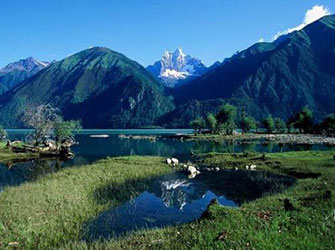 Mainling boasts many natural phenomenons. The Yaluzangbu Grand Canyon is the largest canyon in the world. The mist-crowned Namcha Barwa Peak is the world's 15th highest. Water flows backward at the confluence of Yaluzangbu and Niyang. Also, Mainling has the Gega natural hot spring and the well-preserved primitive forest of Nayi Zhagong Valley.
Mainling boasts many natural phenomenons. The Yaluzangbu Grand Canyon is the largest canyon in the world. The mist-crowned Namcha Barwa Peak is the world's 15th highest. Water flows backward at the confluence of Yaluzangbu and Niyang. Also, Mainling has the Gega natural hot spring and the well-preserved primitive forest of Nayi Zhagong Valley.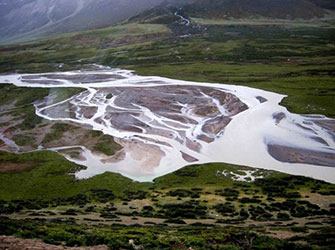 which has a nice climate and attractive landscape.
which has a nice climate and attractive landscape.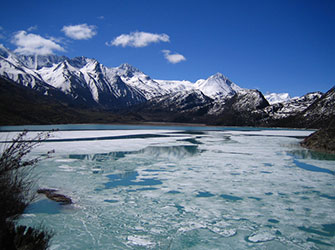 In May and April, Bome has large areas of peach blossoms and highland barley that enhance the area's beauty.
In May and April, Bome has large areas of peach blossoms and highland barley that enhance the area's beauty.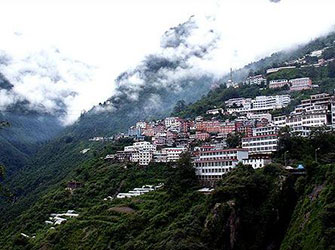 The climate combined with a drop in elevation from other areas of Tibet mean melting snow from the Himalayas create waterfalls along the roads that wind through this hilly region.
The climate combined with a drop in elevation from other areas of Tibet mean melting snow from the Himalayas create waterfalls along the roads that wind through this hilly region.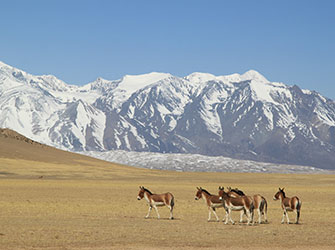 Gyirong - Happiness Town
Gyirong - Happiness Town The area covers more than 4,000 square kilometers and is 3,000 meters above sea level. Despite its high altitude, its name means "deep valley with rushing water" in Tibetan.
The area covers more than 4,000 square kilometers and is 3,000 meters above sea level. Despite its high altitude, its name means "deep valley with rushing water" in Tibetan.
It is overland tour to Mt. Wudangshan in Hubei province from Xian. Hubei province is located in mid China connecting many provinces in China by convenient transportation of railway, cruise, and flights......
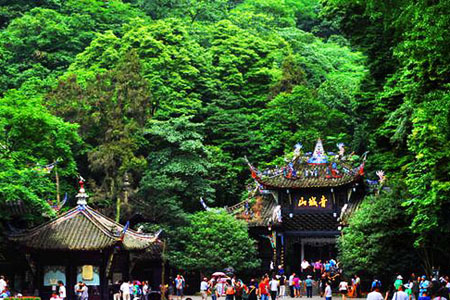
One day classic tours of Chengdu to Mt. Qingchengshan and Dujiangyan Dam will show tourist the profound of ancient Chinese wisdom and culture in harmony relation with the world. ......
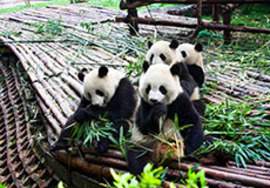
The most classic one day Chengdu tours will bring tourist to Chengdu Giant panda garden and Leshan giant buddha with private travel guide and car in Chengdu, extremely convenient and easy!......
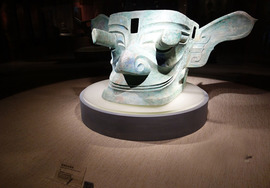
One days best Chengdu tours bring tourist to Sanxingdui museum and giant panda garden with private guide and car, making your tour in Chengdu easy. ......
This panda volunteer work provide tourist with one days unique experience of Panda volunteer project works and bring them an intimate touch with Giant pandas, also the best way to learn deep about pand......
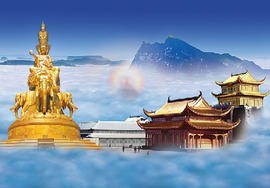
It is tour from the only one operator in Chengdu tours market offering Emeishan and Leshan tours by bullet train. Our highlights including Leshan Giant Buddha and Mt Emeishan. ......

